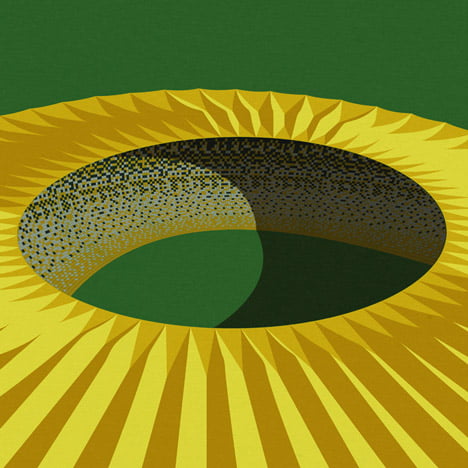
Dezeen's top ten FIFA World Cup 2014 architecture and design stories
With the FIFA World Cup 2014 drawing to a close in Rio de Janeiro later today, here is a countdown of the ten most popular Dezeen stories about the tournament including boot design, jersey graphics, stadium architecture and informal pitches.
1. Leonardo Finotti's photos show two sides of football in Brazil
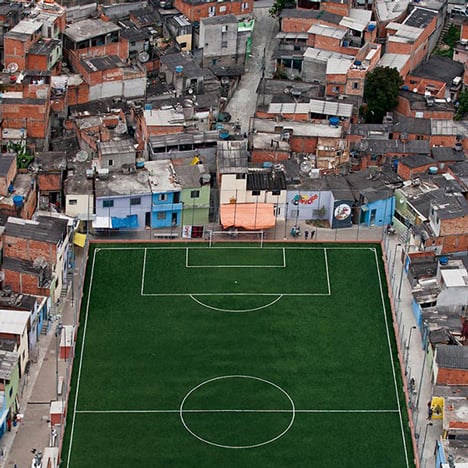
Most popular of all among our readers is this series of photographs by Brazilian photographer Leonardo Finotti that contrast the spectacular World Cup stadiums with the informal "pelada" pitches located in Brazil's poorer urban areas.
"While I covered the most important stadiums and tried to show their main features, at the same time I was devoted to a parallel, and maybe opposite, work on anonymous soccer fields called pelada," said Finotti."I think that both kind of works are related, and Pelada shows how easy and inexpensive would be to build democracy using soccer."
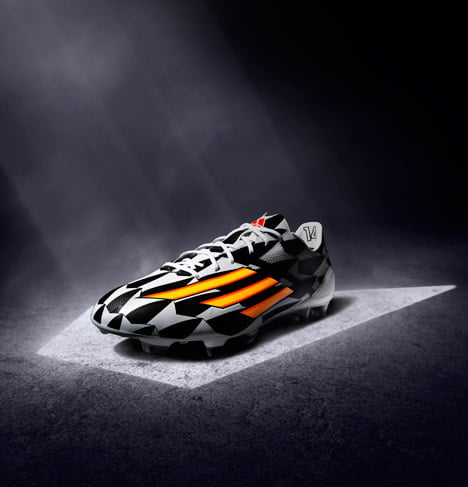
Second most popular is our story about the striking Battlepack football boots released in time for the tournament by Adidas, and worn by stars including Luis Suarez, Robin van Persie and Lionel Messi. The boots featured bold black and white patterns as a deliberate contrast to the vibrant colours you'd expect to see a tournament in Brazil.
"We want the boots to stand out on the pitch," Gerald Kuhtz of Adidas, who designed the boots. "Everyone expects a tournament in Brazil to be full of green, yellow and other bright colours."
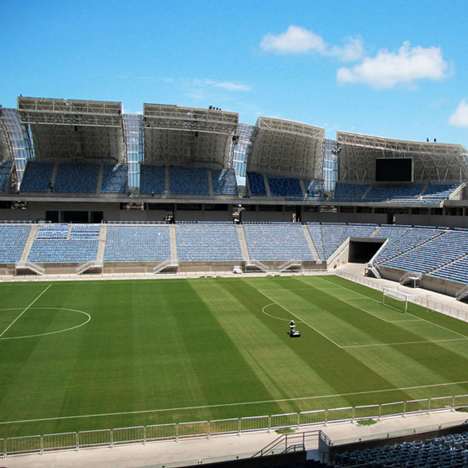
Designed by sports architecture firm Populous, the Arena das Dunas in Natal was one of six new stadiums constructed for the tournament. The stadium, used to host group stage matches, features twenty huge aluminium petals folding around the 42,000-seat arena. Its flowing lines are derived from the sand dunes that surround the city.
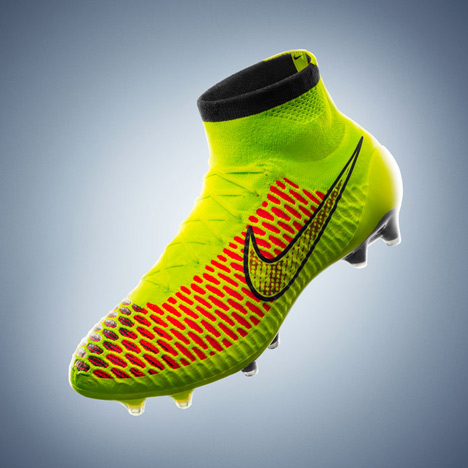
It wasn't a particularly great World Cup for Nike, with arch-rival Adidas kitting out both finalists - Germany and Argentina - and its ankle-height, knitted Magista boots gaining less attention than Adidas' Battlepack footwear (see No 2 above).
The boots use Nike's Flyknit 3D-knitting technology. "With Magista, we've designed a shoe that feels like an extension of the player's body," said Phil McCartney, Nike's vice president of Sport Performance Footwear.
5. Stadium illustrations by André Chiote

Portuguese illustrator André Chiote created a series of graphic posters depicting five of the 12 World Cup stadiums in Brazil including the 1950 Maracanã Stadium in Rio de Janeiro, which is hosting the World Cup final and which was renovated for the tournament by Fernandes Arquitetos.
"The construction of new football stadiums means, for a country who hosts an event like a World Cup, the statement to the world of its technical, financial and cultural capacity," Chiote said. "So, as a national statement, I thought it was an interesting approach to use the colours of Brazil's flag to produce iconic images of some new symbols of that country."
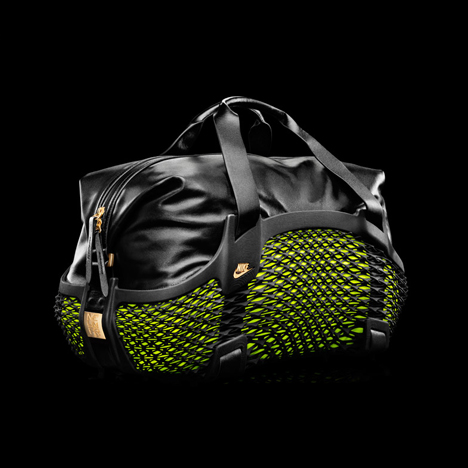
Nike released what it claimed was the world's first 3D-printed football duffle bag - and who are we to doubt them? The Nike Football Rebento is named after the Portuguese word for "explode" and was given to star Nike-sponsored players including Wayne Rooney and Cristiano Ronaldo - who both had to pack their bags earlier than expected.
"We wanted to create something that was truly special for the game's greatest players," said Martin Lotti, creative director for Nike Football.
7. Arena de Amazônia Manaus by GMP Architekten
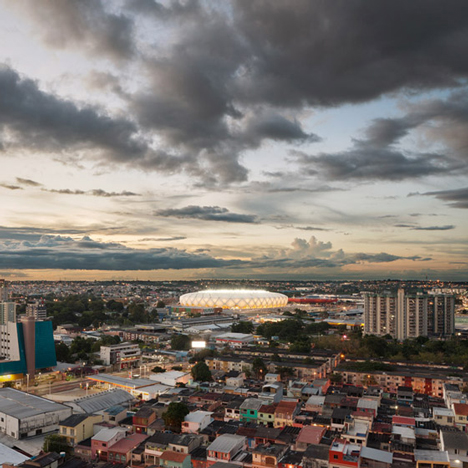
England's ill-fated World Cup campaign started in this stadium in the Amazonian city of Manaus, designed by German firm GMP Architekten. The 44,400-seater arena takes takes its formal cues from traditional Amazonian baskets.
GMP were one of the big architectural winners at the World Cup, developing the concept for BCMF Arquitetos' redevelopment of the 1960s-built Mineirão Stadium in Belo Horizonte and consulted on the renovation of the Estádio Nacional de Brasília.
8. Beira-Rio Stadium refurbishment
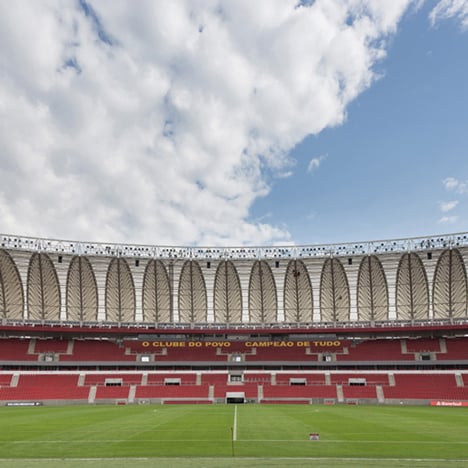
Brazailian firms Hype Studio and Santini & Rocha Arquitetos added a lightweight roof with a leaf-shaped structure to the vintage Beira-Rio Stadium, home to club side Sport Club Internacional, in the city of Porto Alegre.
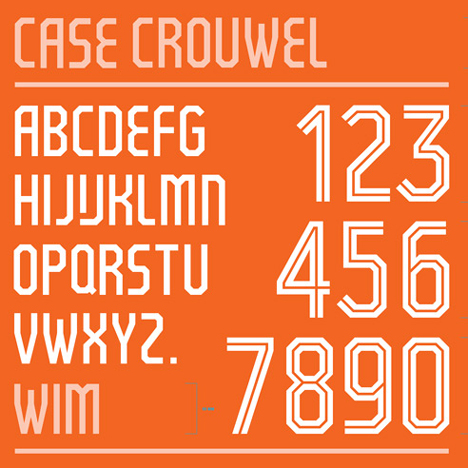
The Dutch team's Nike kit sported a bespoke typeface designed by legendary typogrpaher Wim Crouwel. Case Crouwel is based on the Gridnik typeface, which Crouwel originally designed in 1974.
10. Solar panels installed on the Mineirão stadium
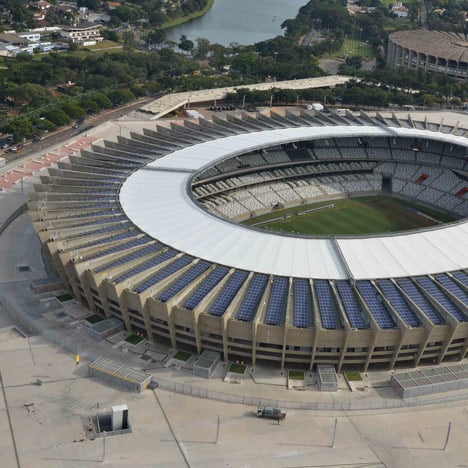
Our tenth most-popular story about the World Cup was published over a year ago, when the solar roof on the Mineirão stadium in Belo Horizonte was completed, turning the 1965 arena into a 2.5MW power plant.